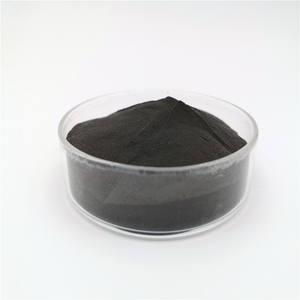**Boron’s Secret Sauce: Cracking the Code of Its Atomic Mass Number**
(What Is the Atomic Mass Number for Boron? Elemental Fundamentals)
Let’s talk about boron—the underdog of the periodic table. You know, that element quietly hanging out in Group 13, sandwiched between beryllium and carbon like a middle child at a family reunion. But don’t let its modest vibe fool you. Boron’s atomic mass number is the unsung hero of its identity, and today, we’re unraveling this tiny but mighty mystery.
First off, the answer you’re here for: **the atomic mass number for boron is approximately 10.81**. Yep, that’s right—a decimal! No, the universe isn’t being indecisive. It’s all about isotopes, and boron’s got two main ones: boron-10 and boron-11. Think of them as fraternal twins with slightly different personalities. Boron-10 has 5 protons and 5 neutrons, while boron-11 rocks 5 protons and 6 neutrons. Their average, weighted by how common they are on Earth, gives us that quirky 10.81.
But why should you care? Imagine you’re baking a cake. If the recipe calls for 10.81 grams of sugar instead of a neat 11, you’d raise an eyebrow. But in chemistry, precision is everything. That decimal isn’t a typo—it’s a fingerprint. It tells scientists how boron behaves in reactions, why it’s great at trapping neutrons in nuclear reactors, or how it strengthens materials like heat-resistant glassware (ever heard of Pyrex? Thank boron).
Let’s rewind. What even *is* atomic mass number? It’s the total count of protons and neutrons in an atom’s nucleus. Protons give an element its identity (boron will always have 5), while neutrons act like the glue holding everything together. For most elements, the mass number is a whole number. But boron? It’s the overachiever with a split personality. Roughly 20% of boron atoms are boron-10, and 80% are boron-11. Do the math: (0.20 × 10) + (0.80 × 11) = 10.81. Voilà!
Here’s a fun twist: boron’s atomic mass isn’t just a random decimal. It’s a clue to Earth’s history. The ratio of boron isotopes in rocks and water can reveal ancient climate conditions or even track pollution sources. Boron is basically a tiny time traveler with a PhD in storytelling.
Now, let’s geek out for a second. Boron was discovered in 1808 by Sir Humphry Davy (yes, the guy who also gave us sodium and potassium). But it wasn’t until the 20th century that scientists nailed down its isotopes. Today, boron is everywhere—from smartphone screens to bulletproof vests. Ever used borax laundry detergent? That’s boron flexing its chemistry muscles again.
So why does boron’s atomic mass number matter? Because it’s a bridge between the abstract world of atoms and the stuff we use daily. That 10.81 isn’t just a number—it’s a backstage pass to understanding how nature balances precision and chaos. Next time you pick up a sports drink bottle (made with boron-containing plastics) or admire a spacecraft’s heat shield (boron strikes again), remember: tiny atoms with decimal points are quietly shaping your world.
(What Is the Atomic Mass Number for Boron? Elemental Fundamentals)
In short, boron’s atomic mass number is like its social security code—unique, essential, and hiding layers of cosmic drama. And now you’re in on the secret. Go forth and impress your friends with random boron facts. They’ll either high-five you or slowly back away. Either way, science wins.
Inquiry us
if you want to want to know more, please feel free to contact us. (nanotrun@yahoo.com)




